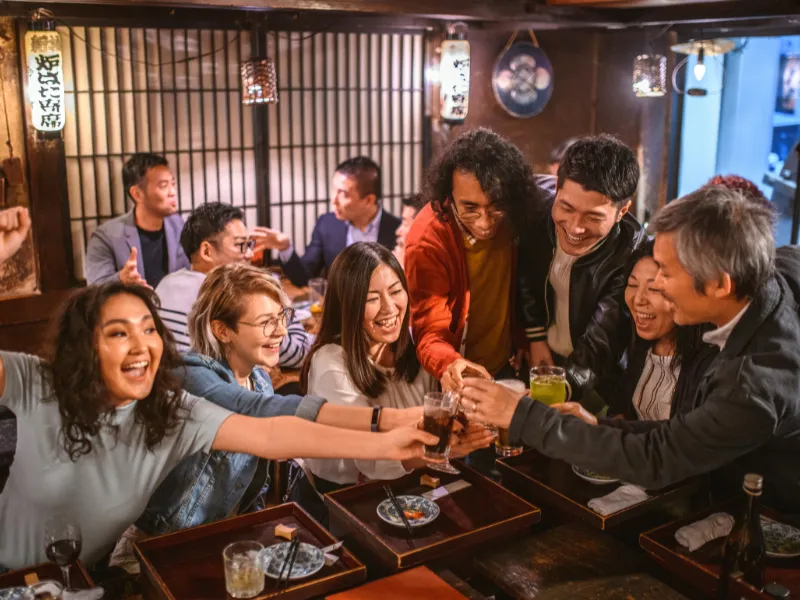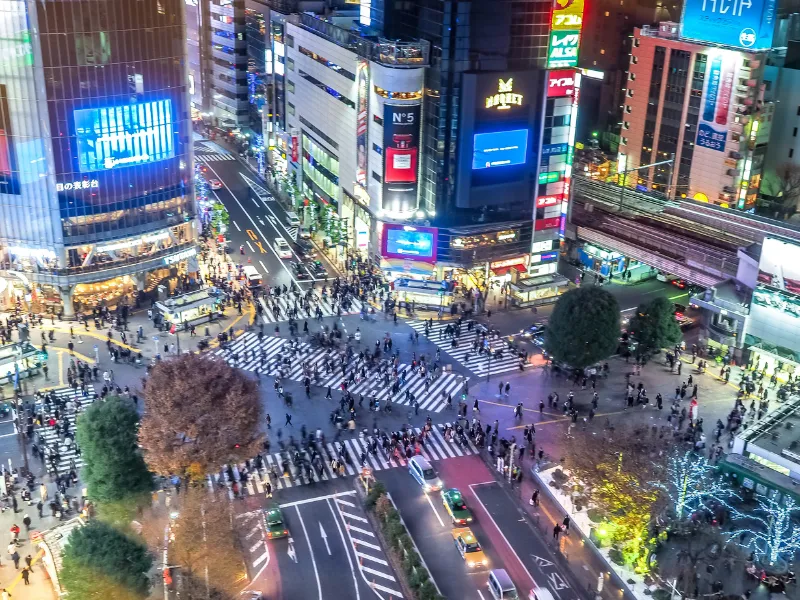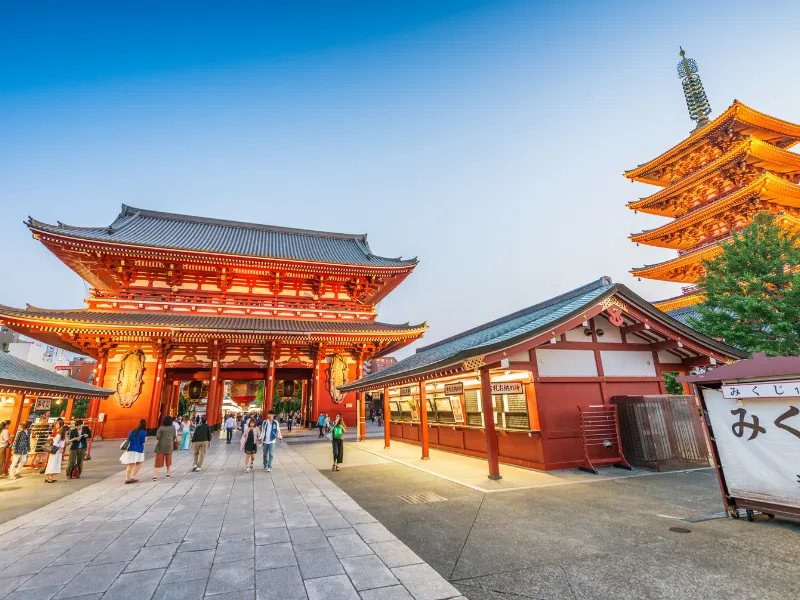Japan Transportation IC Card – A Complete Guide for Tourists

Japan transportation IC card options offer seamless travel across cities, trains, buses, and even purchases at shops and vending machines.
These smart card systems make getting around in Japan fast, convenient, and hassle‑free, especially for international visitors.
What is a Transportation IC Card?
A transportation IC card is a rechargeable contactless smart card, using Sony’s FeliCa technology, widely accepted across trains, buses, subways, and many retail outlets in Japan.
You simply tap in and tap out at automatic gates, and the fare is deducted automatically.
Benefits of using IC cards
Using an IC card is one of the easiest ways to navigate Japan’s complex transportation system. It eliminates the need to buy individual tickets, saving time and reducing stress at busy stations.
Plus, it can also be used for small purchases at convenience stores, vending machines, and more.
- Fast entry/exit at stations
- Wide retail acceptance (convenience stores, vending machines, taxis)
- No need to buy individual train tickets
- Digital records of travel history
Suica Pasmo ICOCA guide – types and usage
Suica, PASMO, and ICOCA are Japan’s major transportation IC cards, interoperable nationwide and suited for different regional entry points. Tourists can choose based on where they arrive and travel, but all three work across Japan.
Suica card (Tokyo / JR East)
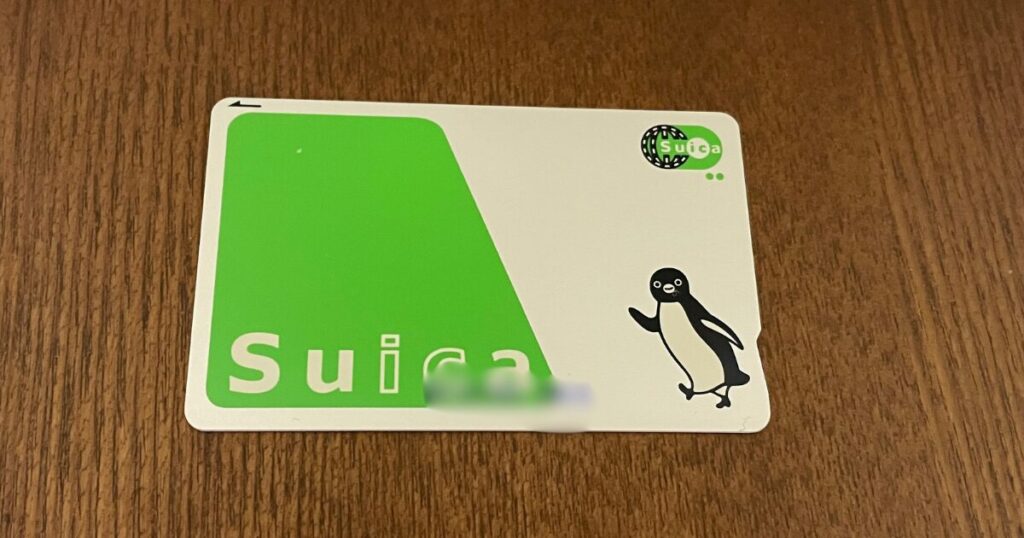
Launched by JR East in 2001, Suica is one of the earliest IC cards and is valid in Tokyo, Sendai, Niigata and beyond.
- Cost: ¥1,500 (¥500 deposit + ¥1,000 usable)
- Area: Tokyo and JR East regions
- Tourist Option: Welcome Suica (no deposit, valid 28 days)
- Mobile: Compatible with Apple Pay / Mobile Suica
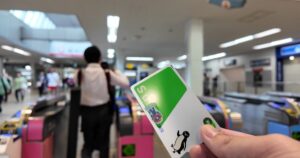
PASMO card (Tokyo / private railways)
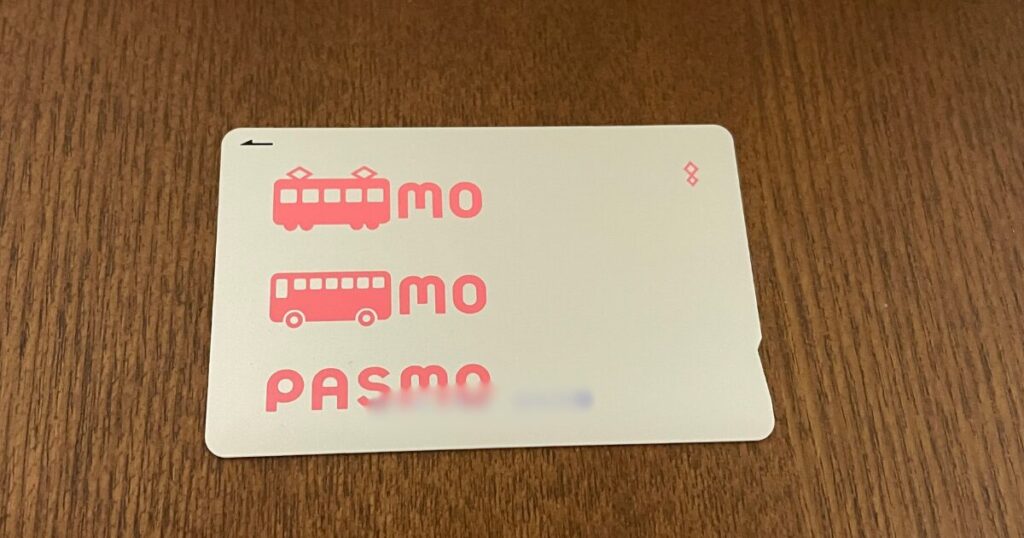
PASMO launched in 2007 in Tokyo’s private railway and subway systems. It quickly became compatible with Suica, making them interchangeable across most services since 2013.
- Cost: ¥1,500 (¥500 deposit + ¥1,000 usable)
- Area: Tokyo private railways and buses
- Tourist Option: ー
- Mobile: Available for iPhone
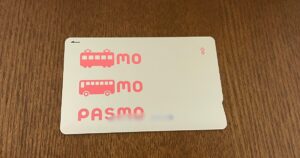
ICOCA card (Osaka, Kansai / JR West)
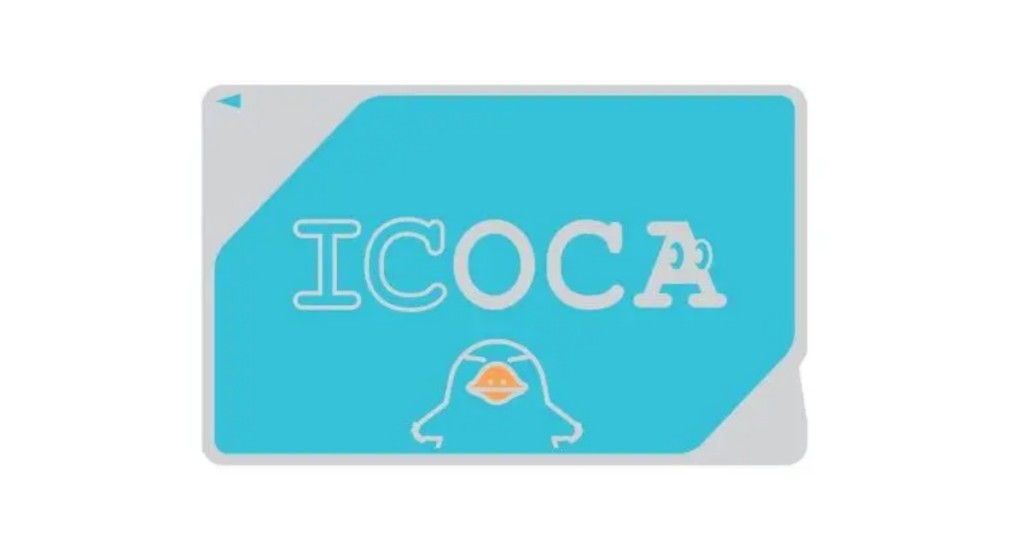
ICOCA, issued by JR West since 2003, is used mainly in Kansai (Osaka, Kyoto, Kobe), but thanks to nationwide interoperability it works all over Japan.
- Cost: ¥1,500 (¥500 deposit + ¥1,000 usable)
- Area: Kansai region and JR West
- Tourist Option: ー
- Mobile: Android-compatible (Japan region only)
Other regional IC cards
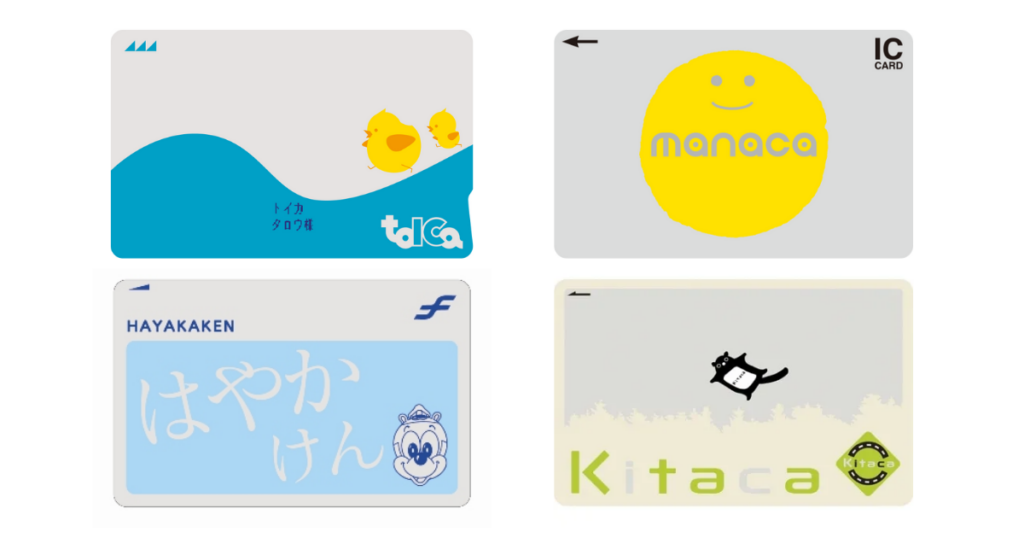
Other cards like Kitaca (Hokkaido), TOICA (Nagoya), manaca, PiTaPa (post‑pay system in Kansai), SUGOCA, nimoca, Hayakaken also participate in the nationwide service since March 23, 2013.
TOICA serves JR Central’s Tōkai region and interoperates nationwide. PiTaPa differs by being post‑pay with credit check and bank account model, less suitable for short‑term tourists.
How to use Japanese IC card effectively
Knowing how to obtain, recharge, and refund a Japan transportation IC card helps you use it efficiently and avoid wasted balance. Here’s a simple how‑to guide tailored for tourists.
Where to buy an IC card
Getting an IC card in Japan is quick and easy, even for first-time visitors. You can purchase one at major train stations, airports, or tourist information centers.
- Major train stations in Tokyo and kansai offer Suica, PASMO, and ICOCA vending machines and service centers
- Welcome Suica cards available at airports or tourist centers
- Other regional cards at local stations.
How to charge, top up, check balance
You can top up at ticket machines, convenience stores, or using mobile apps (Mobile Suica, Mobile ICOCA).
Typical increments: ¥500, 1k, 2k, up to ¥10,000 per transaction; max balance ¥20,000.
Balance and last 20 trips can be viewed at adjustment machines or via smartphone apps.
Using your card for transport and purchases
Simply tap your card over a reader at the gate when entering and exiting transit systems. For buses, tap when boarding and exiting. The correct fare is automatically deducted.
Accepted at many convenience stores (7‑Eleven, FamilyMart, Lawson), vending machines, restaurants and taxi terminals that display the universal “IC” logo.
How to refund or return the card
Here are three concise sentences summarizing how to refund or return a Japanese IC card (such as Suica or ICOCA).
You can return your physical IC card. Suica at JR East stations or ICOCA at JR West ticket offices and receive both the remaining balance and the 500‑yen deposit.
Please note that a handling fee of approximately 220 yen will be deducted from the refund.
For digital or mobile versions, such as Mobile Suica, unused items like discount passes may be refunded through the app directly to your credit card (with a handling fee), while mobile ICOCA refunds typically require a Japanese bank account and access via Japanese-only services.
Japan transportation IC card tips for tourists
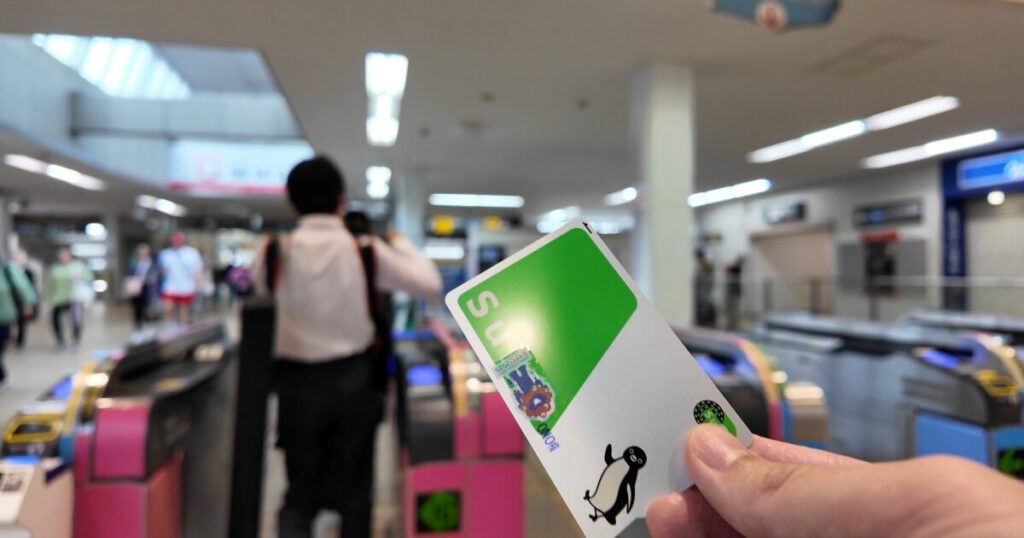
Here are practical tips based on tourist experiences to help you maximize convenience and avoid common pitfalls.
Which card should tourists choose?
Landing in Tokyo? Buy Suica or PASMO!
Landing in Kansai? ICOCA is easiest.
But any of these cards work nationwide thanks to mutual interoperability.
Many tourists choose based on where they start. They’ll keep the card as a souvenir too.
Smartphone integration options
iPhone users with Japan‑region settings can add Suica or PASMO to Wallet and use Apple Pay after purchasing region‑supported devices.
Android devices purchased in Japan can use Mobile Suica or Mobile ICOCA via Google Pay, though international Android phones often lack compatibility.
Avoiding chip shortage issues
Due to chip shortages in 2023, standard unregistered Suica and PASMO sales were paused—but resumed limited sales in early 2025 depending on card type.
Tourists are encouraged to choose Welcome Suica or mobile options if physical cards are unavailable.
Comparison table of major IC cards
With several types of IC cards available in Japan, it can be confusing to know which one to choose. While their functions are mostly the same, each card has slight differences in terms of region, refund policy, and tourist-friendly options.
| Card Type | Region Issued | Deposit & Price | Validity | Refundable? | Use Nationwide? | Note |
|---|---|---|---|---|---|---|
| Suica | Tokyo / JR East | ¥1,500 (¥500 deposit + ¥1,000 usable) | 10 years | Yes | Yes | Mobile Suica, Welcome Suica |
| PASMO | Tokyo private railways | ¥1,500 | 10 years | Yes | Yes | ー |
| ICOCA | Osaka / JR West | ¥1,500 | 10 years | Yes (in JR‑West area only) | Yes | ー |
| TOICA, Kitaca, etc | Regional | ~¥1,500 | Similar | Region-dependent | Yes | ー |
Transportation IC card FAQ

Here are answers to frequent questions asked by visitors about using Japanese IC cards.
- Can I use the card on Shinkansen?
-
You cannot buy Shinkansen tickets directly with an IC card’s stored e‑money. You can link tickets online or buy separately and tap the IC card for gate access where supported.
- What if I exceed the ¥20,000 card balance?
-
You cannot top up beyond ¥20,000. If you need more, consider using multiple cards or pay by credit card separately for high‑cost transport (like bullet trains).
- Are there discounts for children or commuters?
-
Yes, child versions (“kodomo”) and commuter‑pass enabled versions exist for each card type. They offer half‑fare travel for children, and multi‑month passes for commuting.
- Is it OK to keep the IC card as souvenir?
-
Absolutely. Many tourists choose not to return the card—especially for non‑refundable versions like Welcome Suica and keep them as travel mementos. Just make sure to spend the balance or accept that unspent money cannot be refunded.
Final Thoughts on Transportation IC Cards
In summary, Japan transportation IC card systems (Suica, PASMO, ICOCA, and others) offer unmatched ease of travel across transit and retail.
Tourists will find them intuitive, widely accepted, and interoperable across regions. Whether you pick up Welcome Suica at Narita airport or ICOCA at Kansai, just tap and go!
Be sure to monitor your balance, use mobile integrations if possible, and plan accordingly if you expect long-distance travel or bullet train usage.
With this comprehensive guide, navigating Japan has never been smoother.

Don’t miss this one too!

